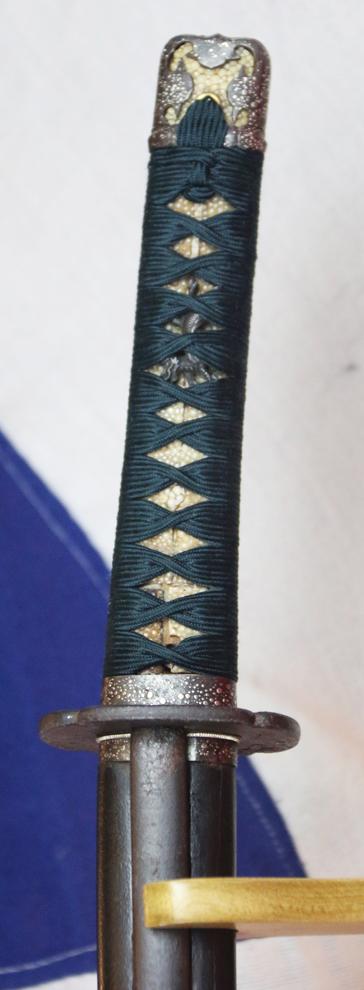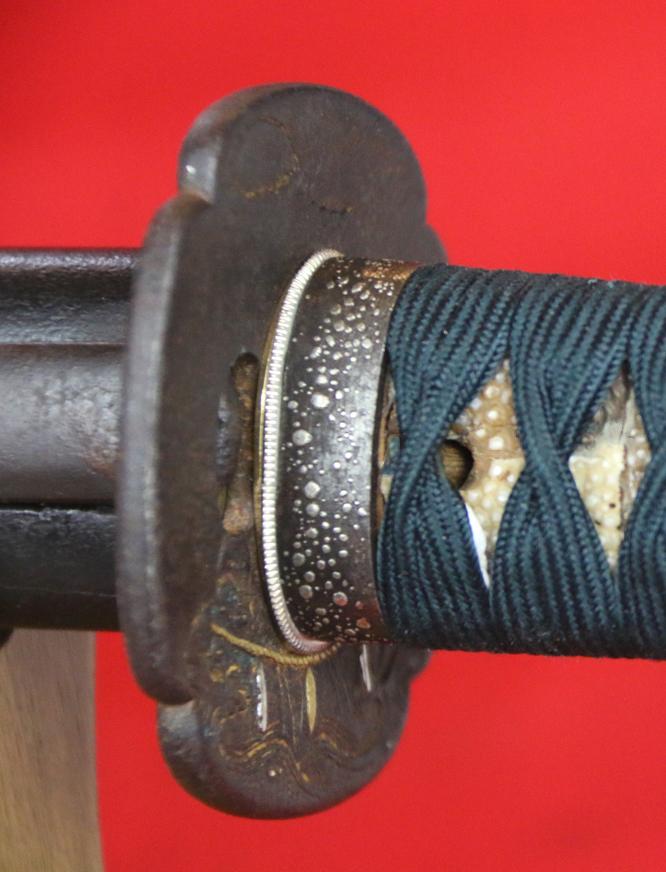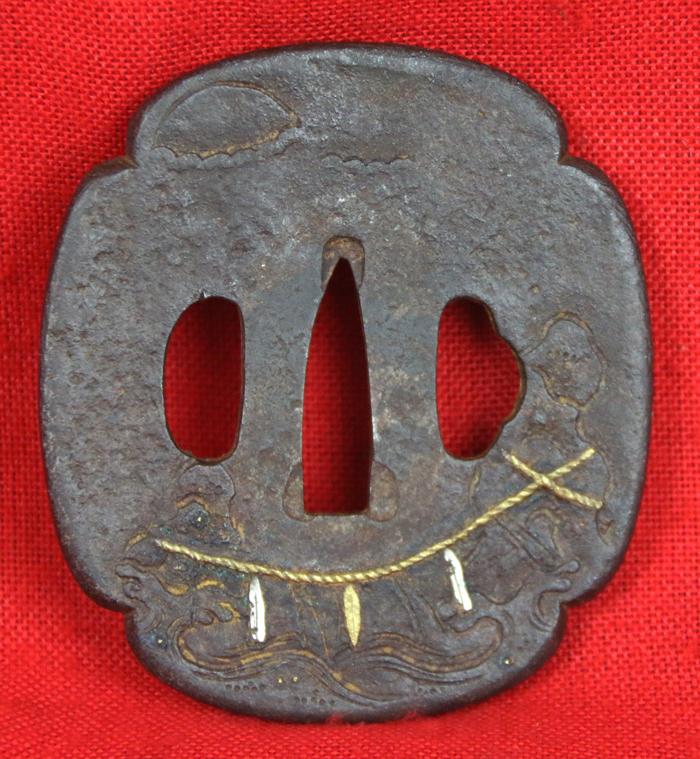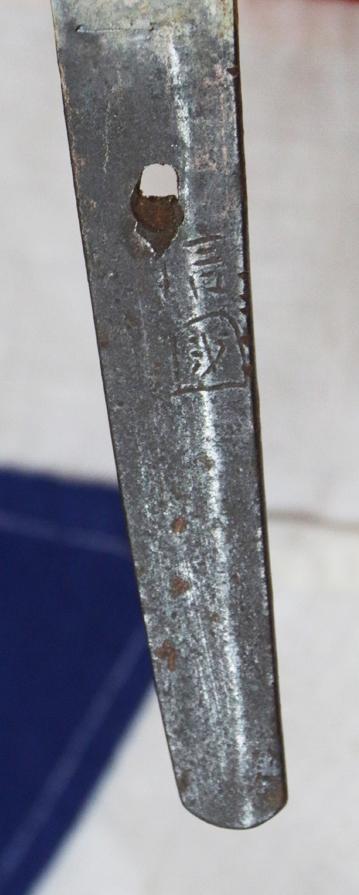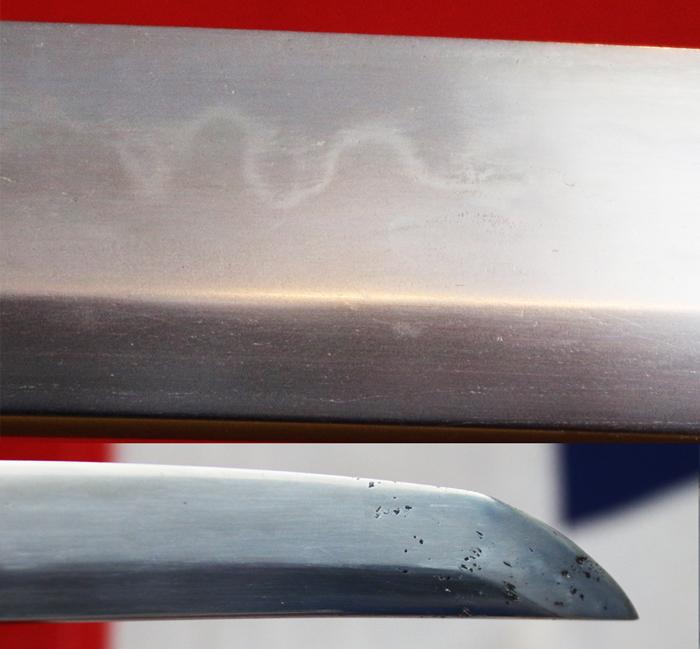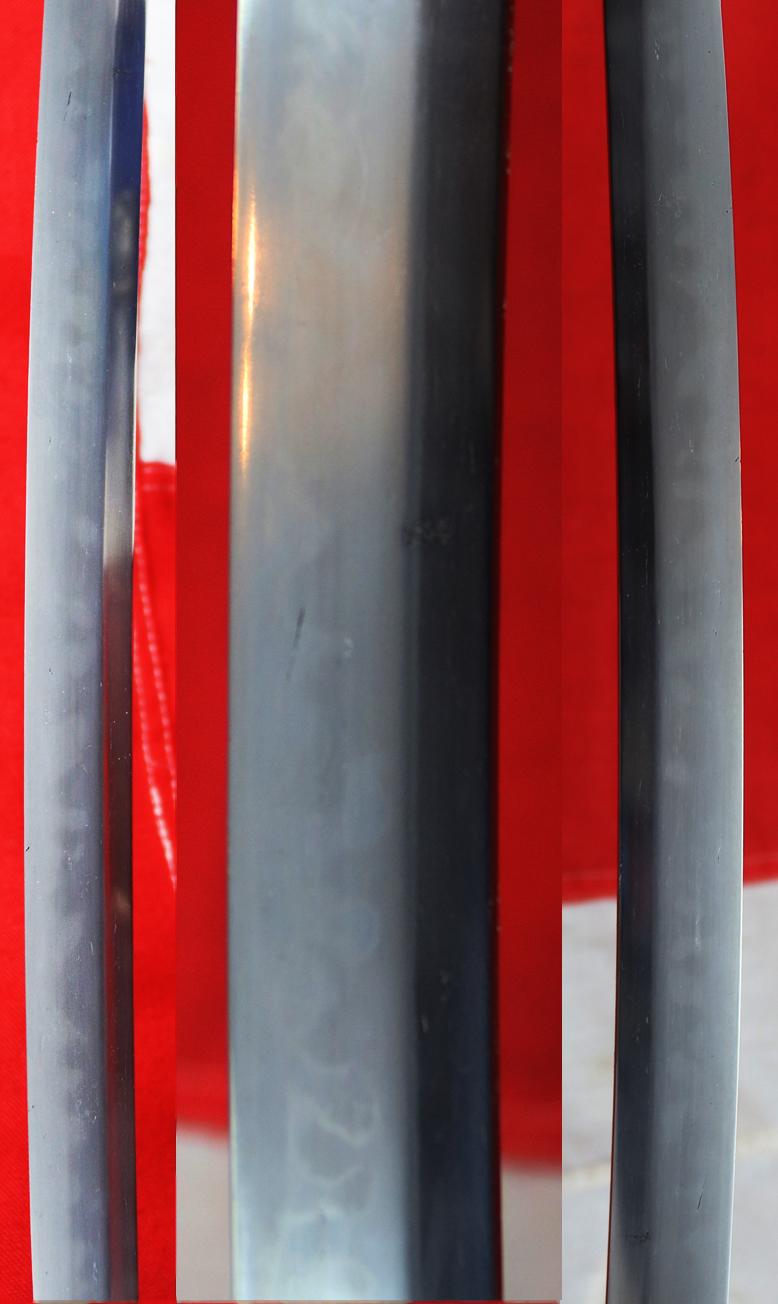A 600 Year Old Samurai Wakazashi, Higo Han Dachi Mounted, Signed by Nobukuni
All original fittings and koshirae of the Edo period, the Higo han dachi mounts are most exceptional and a form very rarely seen, in that all seven pieces in the original full suite are Higo scholl, iron ground, stunningly decorated with splashes of pure silver droplets applied somewhat like flakes of snow falling in the night. They are absolutely captivating in their beauty.
The blade has an absolutely stunningly complex and active hamon, that looks fabulous, with totally as to be expected, a small area of the tip of the blade with pitting, Some pitting was left in place by the polisher, a conscious choice that helps to preserve as much of the original form, thickness, and therefore handling characteristics as possible. Otherwise, in good shape. The saya has its original Edo period ishime stone lacquer in super condition with just a couple of old areas of surface repair, with a kozuka pocket and its complimentary plain iron Higo kozuka [utility knife] present.
It has a fine mokko iron plate tsuba, decorated with a full moon over clouds and a gold and silver inlaid hanging rope, with attachments, over crashing waves.
Han-dachi mounted swords originally appeared during the Muromachi period when there was a transition taking place from tachi slung swords to katana obi mounted swords. The sword was being worn more and more edge up when on foot, but edge down on horseback as it had always been. The handachi is a response to the need of a sword to be worn in either style.
The samurai were roughly the equivalent of feudal knights. Employed by the shogun or daimyo, they were members of hereditary warrior class that followed a strict "code" that defined their clothes, armour and behaviour on the battlefield. But unlike most medieval knights, samurai warriors could read and they were well versed in Japanese art, literature and poetry.
Samurai endured for almost 700 years, from 1185 to 1867. Samurai families were considered the elite. They made up only about six percent of the population and included daimyo and the loyal soldiers who fought under them. Samurai means one who serves."
Samurai were expected to be both fierce warriors and lovers of art, a dichotomy summed up by the Japanese concepts of bu [to stop the spear] expanding into bushido (the way of life of the warrior) and bun (the artistic, intellectual and spiritual side of the samurai). Originally conceived as away of dignifying raw military power, the two concepts were synthesised in feudal Japan and later became a key feature of Japanese culture and morality. The quintessential samurai was Miyamoto Musashi, a legendary early Edo-period swordsman who reportedly killed 60 men before his 30th birthday.
Code: 24251
4995.00 GBP


